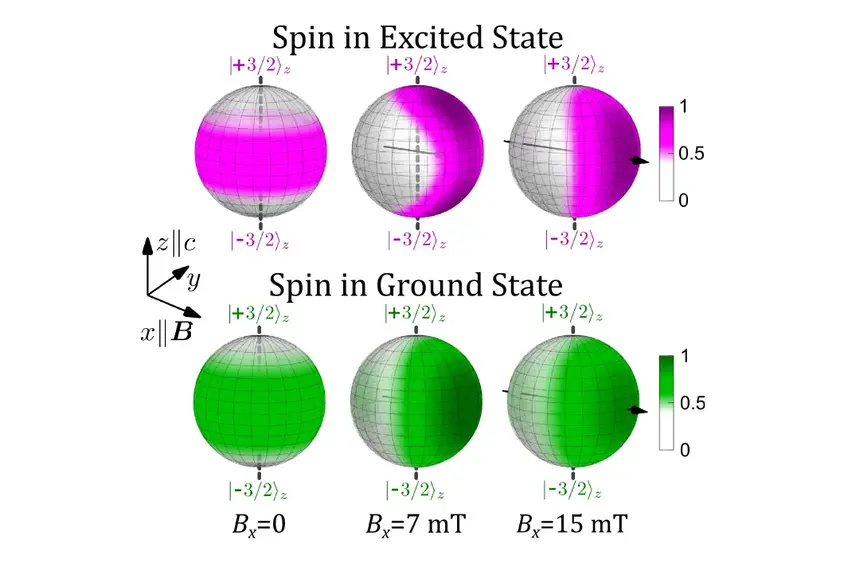Dynamical reorientation of spin multipoles
Color centers in solids are optically active crystallographic defects containing one or more trapped electrons. Of particular interest for quantum technologies are optically addressable spin centers, i.e. color centers whose electronic spin states can be selectively initialized and read out with light. In such systems, spin dynamics are typically probed via optically detected magnetic resonances (ODMR), i.e. changes in light intensity caused by changes in the spin state. Therefore, a thorough understanding of the relationship between spin and optical dynamics is essential for quantum computing and quantum sensing applications.
Among the various materials for implementing such a technology, SiC is attracting increasing attention as it is a wide bandgap semiconductor compatible with CMOS technology that also contains highly coherent optically active spin centers. One such center is the negatively charged silicon vacancy (VSi), with a total spin of S=3/2. Typically, most spin dynamics studies of the VSi center are performed under external magnetic fields applied along the symmetry axis of the center. In a recent paper published in Physical Review Applied, researchers from the Paul-Drude-Institut für Festkörperelektronik, the Helmholtz-Zentrum Dresden-Rossendorf and the Institut de Ciències Fotòniques have shown that weak magnetic fields applied perpendicular to the symmetry axis of the VSi center lead to the inversion of the ODMR contrast for certain spin transitions in both the ground and excited states. The experimental results are well reproduced by a theoretical model introduced in the manuscript, which explains the unusual behavior of the ODMR signal as a consequence of the reorientation of the spin polarization under the transverse magnetic field (cf. figure). This reorientation leads to an inversion of the quadrupole spin polarization, i.e., the orientation of the spin polarization axis either parallel or perpendicular to the symmetry axis, and to the appearance of a non-zero dipole spin polarization within certain magnetic field ranges.

These results shed light on the complex dynamics of spin multipoles in color centers and are not limited to the 3/2 spin of the VSi center. In fact, the authors expect similar effects for any color center with S>1/2 and a well-defined symmetry axis. Finally, the results are important for the realization of quantum magnetic field and temperature sensors, and for the implementation of spin-photon interfaces based on color centers.
Title: Dynamical reorientation of spin multipoles in silicon carbide by transverse magnetic fields
Authors: A. Hernández-Mínguez, A. V. Poshakinskiy, M. Hollenbach, P. V. Santos, and G. V. Astakhov
Source: Physical Review Applied 22, 044021 (2024)
DOI: https://doi.org /10.1103/PhysRevApplied.22.044021